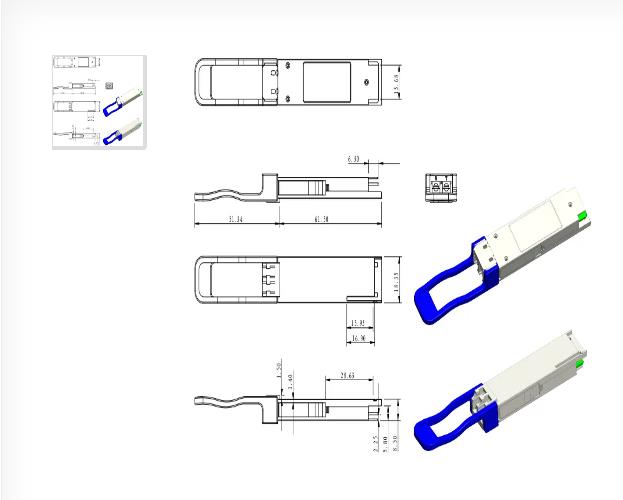OTN and PTN
It should be said that OTN and PTN are two completely different technologies, and technically speaking, it should be said that there is no connection.
OTN is an optical transport network, which is evolved from the traditional wavelength division technology. It mainly adds the intelligent optical switching function. It can realize optical crossover through data configuration without manual fiber jumpers. The maintainability and networking flexibility of WDM equipment are greatly improved. At the same time, the new OTN network is gradually evolving to larger bandwidth, larger particles, and stronger protection.
PTN is a packet transport network, which is the product of the integration of the transport network and the data network. The main protocol is TMPLS, which has fewer IP layers and more overhead packets than network devices. It can realize ring networking and protection. It is a carrier-class data network (traditional data networks cannot meet the carrier-class requirements). The transmission bandwidth of PTN is smaller than that of OTN. Generally, the maximum group bandwidth of PTN is 10G, OTN single wave is 10G, group path can reach 400G-1600G, and the latest technology can reach single wave 40G. It is the backbone of the transmission network.
OTN and SDH, WDM
OTN is based on WDM technology, the powerful operation, maintenance, management and assignment (OAM) capabilities of SDH are introduced on the basis of super large transmission capacity. OTN uses embedded standard FEC, rich in maintenance and management overhead, and is suitable for large-granularity service access FEC error correction coding, which improves bit error performance and increases the span of optical transmission.
OTN Application scenarios
The OTN-based intelligent optical network will provide an ideal solution for the transmission of large-granularity broadband services. The transport network is mainly composed of the inter-provincial trunk transport network, the intra-provincial trunk transport network, and the metro (local) transport network. The metro (local) transport network can be further divided into a core layer, an aggregation layer and an access layer. Compared with SDH, the biggest advantage of OTN technology is to provide scheduling and transmission of large granularity bandwidth. Therefore, whether to use OTN technology at different network layers depends on the size of the main scheduling service bandwidth granularity. According to the current situation of the network, the main particles of the core layer scheduling of the inter-provincial trunk transmission network, the intra-provincial trunk transmission network and the metro (local) transmission network are generally Gb/s and above. Better OTN technology to build.
For the aggregation and access level of the metropolitan area (local) transport network, when the main scheduling particles reach the Gb/s level, OTN technology can also be preferentially constructed.
1. National trunk optical transport network With the IP-based network and services, the development of new services and the rapid increase of broadband users, the IP traffic on the national trunk has increased sharply, and the bandwidth demand has increased exponentially year by year. The WDM national trunk line carries PSTN/2G long-distance services, NGN/3G long-distance services, and Internet national trunk line services. Due to the huge amount of bearer services, WDM national trunk lines have an urgent need for the protection of bearer services. After adopting OTN technology, the bearer mode of national trunk line IP over OTN can realize SNCP protection, SDH-like ring network protection, MESH network protection and other network protection methods. Greatly reduced.
2. Intra-provincial/regional trunk optical transport network The intra-provincial/regional backbone routers carry services between long-distance offices (NGN/3G/IPTV/special line for major customers, etc.). Through the construction of provincial/regional trunk OTN optical transmission network, the safe and reliable transmission of GE/10GE, 2.5G/10GPOS large-granularity services can be realized; ring networks, complex ring networks, and MESH networks can be formed; the network can be expanded on demand; Realize cross-scheduling and grooming of wavelength/sub-wavelength services, and provide wavelength/sub-wavelength dedicated line services for large customers; also realize the transmission of other services such as STM-1/4/16/64SDH, ATM, FE, DVB, HDTV, ANY, etc. .
3. Metro/local optical transport network At the core layer of the metro network, the OTN optical transport network can realize large-scale broadband services between the metro aggregation router, the local network C4 (regional/county center) aggregation router and the metropolitan core router. send. The upstream interface of the router is mainly GE/10GE, and may also be 2.5G/10GPOS. The OTN optical transport network at the metro core l
Post time: Nov-07-2022


